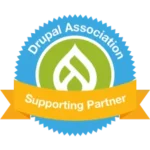In part 1 of this post, I discussed the difference between User Interface (UI) and User Experience (UX). I hope I didn’t scare you off when I stated:
“…people throw the phrase UX around like it’s something simple, like all you have to do is fix the UX and everything will be fine. While everything will be fine, and addressing UX is probably the best thing you can do for your website, this is a multi-step process. Sometimes, what you think should be a simple fix or revision, just isn’t.”
I get it. A statement like that doesn’t exactly help when you have a big website project looming. Don’t worry. (By the way, that’s one of my dad’s favorite sayings. It’s always said with patience, amusement, and a slight-to-me Slavic accent).
Although a well-functioning, goal-fulfilling website requires time, effort, and a budget, there are ways to get your website up to snuff without breaking the bank or giving your boss an aneurysm.
UX has many different components and improving it is a multifaceted process. However, tackling even one part of the process can make a big difference. For example,
-
A simple site audit of your site can pinpoint glaring security issues and bugs resulting from outdated code (computer language that hasn’t caught up to your system’s latest updates,) and uncompleted software updates. These issues can then be resolved so you spend less time updating content on your website or troubleshooting glitches.
-
Even small tweaks to your website can help you entice new donors! For example, you can start by making your landing page (the 1st-page users reach) geared towards the user’s wants and needs, and by cleaning up some bugs in your system so they can easily click the links you want them to.
Here are the benefits of the two suggestions broken down a bit more:
SITE AUDITS – Prioritize what’s causing you to miss opportunities to connect with your donors, volunteers, and potential participants.
A site audit can help you determine what is and isn’t working on your site. For example, what gets your target audience to engage, contact you, volunteer, or donate, and what chases them away?
A site audit can also help you catch bugs (those things that make your site really slow and unresponsive) and security glitches (which also contribute to slow sites that don’t function as you would like – two things you really don’t want on your website when that’s how most people find you and learn about you.
What is a Site Audit? Basically, a site audit is like taking a look “Under the Hood” of your car and doing a 300-point inspection. Site audits are completed using a mix of highly automated tools and human expertise to ensure that we catch everything that is or could potentially stop your website from performing as well as it can.
MAINTENANCE – Now that you know what’s costing you the most in missed opportunities, prioritize those fixes first, gain initial wins, and provide your leadership team with measurable returns on investments.
Have you ever spent hours in your content management system (CMS – that thing non-geeks use to make website changes) trying to add a button here, a link there, a graphic over there, and wishing desperately you could tweak the design just a teeny, tiny bit? I have! And I can attest that having everything perfectly displayed on your screen, only to find out it doesn’t look like that live, then trying again, and again to make it work, can be one of the most frustrating computer experiences ever. It’s right up there with losing 50 hours of work because you didn’t save that very important document.
Regular maintenance by experts can solve this problem by fixing glitches, adding landing pages, adjusting the design, and the list goes on.
In terms of UX, completing a Site Audit and conducting regular maintenance on your website are two of the easiest and most economical ways to start seeing results quickly. (Gosh, I’m starting to sound like a miracle weight loss commercial, but I digress).
More importantly, these two steps can also be your best approach to convince upper management that there needs to be a change to your website. Here’s why:
- You can pinpoint exactly where you’re losing traffic
- It’s easy to illustrate the cost of not improving glitches that cause your website to load slowly, or that stop your user from completing a step. This means it’s also easy to justify the cost of fixing the problems.
In most cases, people just want the website to work. A site audit and regular maintenance will make sure that your tool is working efficiently and has no broken parts. It’s like taking your car in for regular service appointments – finding potential issues sooner rather than later, and helping to keep that engine purring.
Other important things to remember:
Your organization’s goals determine what results you would like from the website (i.e. would you like the user to make a purchase? Sign up for a service? Click a particular link?)
Your user’s goals determine the actual design, set-up, layout, structure, and content of the website.
That’s why you need to take your website a little bit further and tackle a couple of other tasks.
(Although, it’s worth remembering that the speed of your website, which you already solved by doing a site audit and conducting regular maintenance, will also greatly impact your user’s experience and his or her ability to complete his or her goal. So, if you don’t have the time or the funding to take the additional steps below, that’s ok, you’ve already improved your site by leaps and bounds, just by making some of the maintenance changes suggested by the site audit ).
SEO & MARKETING – Be found! Get your site on the first Google search page so that when people are looking for you or something similar, they find you.
There are a lot of components to SEO & Marketing (search it and before you know it you’ll have 20 articles to read, each with links to other interesting content you would like to read, which, but the way, is one example of SEO at work).
But it comes down to this; if your site is not one of the cool SEO kids, no one is going to find you, which is a shame, because you’re supporting an important cause, have great content, and many resources.
CREATIVE DESIGN – Creative website design is an excellent way to convey the emotion, energy, and hope behind what you do. This is what attracts those donors and volunteers.
… and, to put it bluntly, if your website looks like it belongs in the 90s, it probably does. A site that looks like it’s designed professionally, and holds its own in modern aesthetics will increase your organization’s trust factor (which, as we know, is important for getting people to take that next step).
WEB DEVELOPMENT – Sometimes, you’ve tried everything, but the gauze and bandages just aren’t working anymore. Your website is so far gone that if you want it to work for you, it’s going to need some major surgery.
When over half your site is barely functioning, you have multiple pages you never knew existed, no searchable presence, and a design that goes so far back your grandma doesn’t know what era it’s from, you have to take the plunge, tear that baby down, and rebuild.
There are a lot of options there, and all of them can contribute to your bottom line and help you:
-
Attract potential donors and convert them to actual donors.
-
Optimize your time so that your tasks are done on time
-
Attract potential volunteers and convert them to actual volunteers
-
Get fewer phone calls and emails asking for information available online
-
Increase awareness of your organization and your cause, leading to more interest and subsequently more support and participation
And it’s well worth the effort!
Not sure your boss is going to buy these anecdotal statements without some solid numbers to back them up? Talk to your web developer or SEO specialist, or give us a shout, and have them (or us), look at how many visitors your site is losing and where. Then compare it to some of your competitor sites or partner organizations you look up to. You might also want to check out “Why an unhealthy website means less funding and wasted resources.”
Extra tip: When you get a question about the immediate return on investment (ROI), consider Emily Wenstrom’s thoughts on the topic:
Sure, at the end of the day, ROI is what companies are about. If it doesn’t help the company raise revenue, it’s not serving the company—or its employees.
But people who hound this point on a fresh idea are usually looking to eliminate all the risk factors associated with trying something new. Should a project fail to deliver that target ROI from the outset, the ROI assurance-seeker has the ammunition to shut the effort down and a quick finger on the trigger.
When you’re trying something new, you’re not likely to nail it on your first stab. Like any project, iteration should be an assumed, ongoing part of implementation. Rather than set a threshold ROI, set a goal ROI to work toward as the project is honed.
“6 Accidental Ways Companies Kill Innovation”- Convince and Convert
Like all good things, ROI takes time, and often your recipe will need a tweak here or there. But once you have a good foundation, it only gets easier. It’s kind of like exercise, it’s a lot easier to get out there and try new things, and do well in them when you have a good base to go off of.
…and now that I’m pulling metaphors out of thin air, I think it’s time for me to sign off.
Until next time!
P.S – as always, if you have thoughts, comments, or if you’re looking for information on a particular topic, let me know, and I’ll see what I can cook up for you – [email protected]
Want to know exactly what’s going on with your website before you do anything? Have a trusted team conduct a Website Audit.





